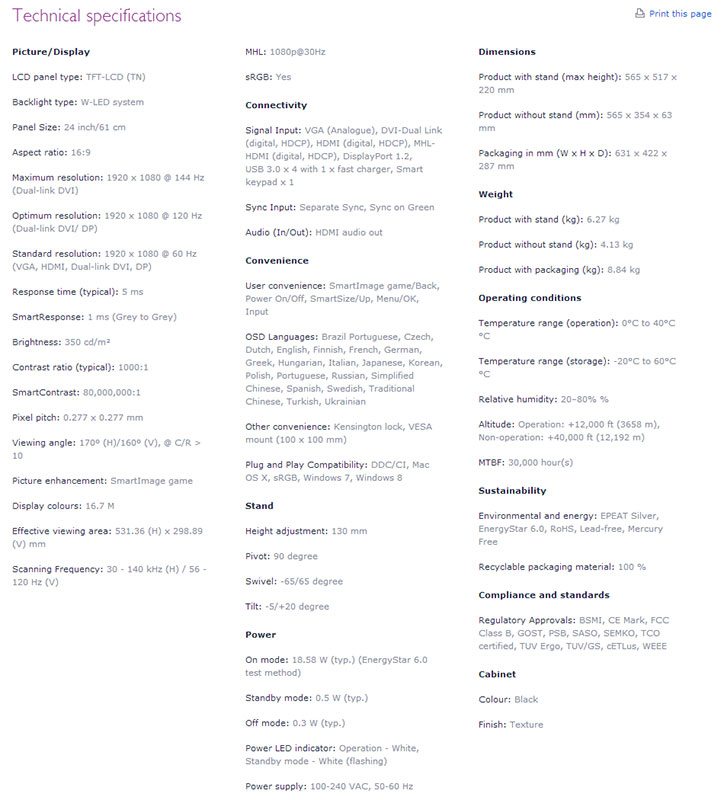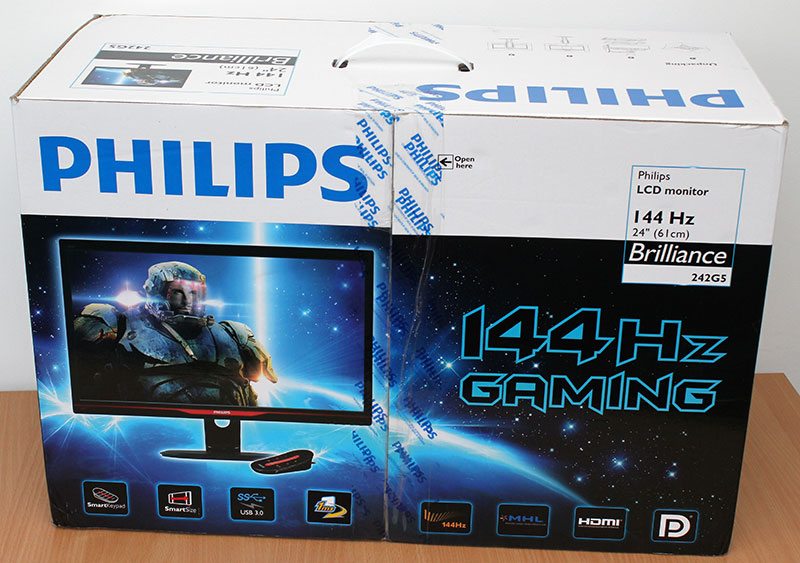Philips 242G5 144Hz LCD Gaming Monitor Review
Chris Hadley / 11 years ago
Introduction

Over the last few months, monitors that are built for gaming have been cropping up within the marketplace and at last people can get a panel that compliments their high performance gaming system, delivering better image quality and faster refresh rates with a typical 144Hz refresh rate. The refresh rate is the key part to what sets this new type of panel apart from the rest of the crowd. As I’ve highlighted before, it’s all and well having a GPU that can pump out in the region of 100fps, but if your monitor is only running at 60Hz as the vast majority do, then it can only show a maximum of 60 frames per second itself. As a result there are frames that have been rendered effectively going to waste and it may be one of those frames that could make a crucial difference to the outcome of a tournament for example.
This is where the new 144Hz standard comes into play. With this higher refresh rate, the panel is able to display up to 144 frames per second. This means that not only are those extra frames not going to waste, but the image will appear to be much smoother and fluid in motion as scenes are displayed.
Recently I took a look at one of these new 144Hz panels from AOC, namely the G2460PQU and on the whole I was impressed with the quality of the build and the feature set on offer, but most importantly, the difference that the faster refresh rate made to not only game play but also during day-to-day usage.
Philips as some may or may not know is related to AOC through a parent company known as TPV. Whilst the two rand names run side by side, it is worth noting that some aspects of the monitors from each brand may appear to be the same, but on the whole they are run as two completely separate brands within the market place.

Philips ship the monitor in is probably one of the biggest boxes that I’ve seen for a screen of this size. The box is wrapped in a bold space styled scene with an image of the screen itself and along the lower edge are a set of smaller images highlighting certain aspects of the screen.

With everything taken out of the box, it’s immediately apparent why the box is so thick. Where most screens come with the base plate completely separate from the rest of the stand, the 242G5’s stank is one complete unit and as a result the dimensions of the box are increased. Alongside the stand and the LCD panel, there are a set of manuals and an information and driver CD, IEC power cable, USB3.0 cable, two display cables (VGA and DL-DVI) and finally an OSD remote control pad.




















